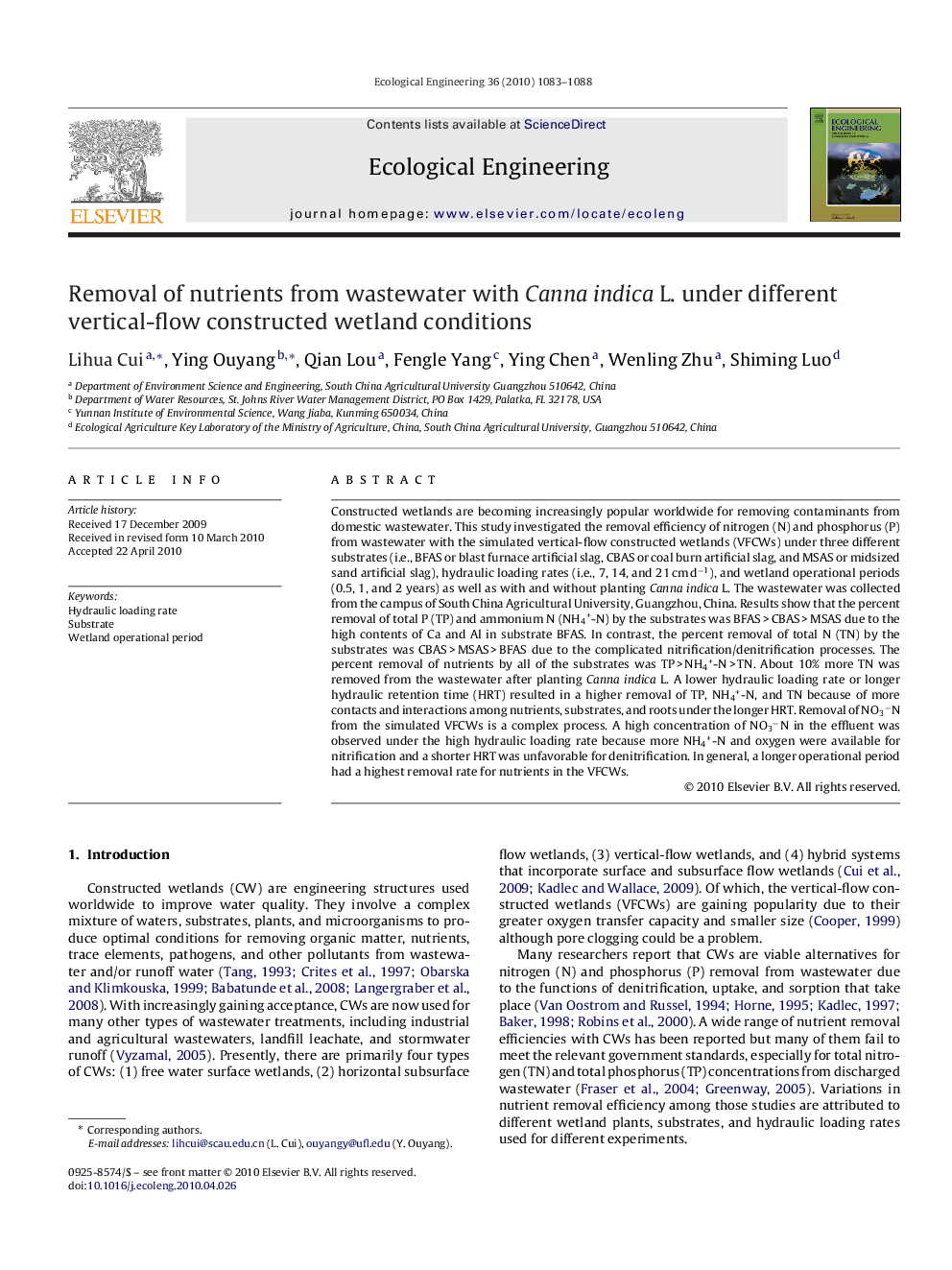| کد مقاله | کد نشریه | سال انتشار | مقاله انگلیسی | نسخه تمام متن |
|---|---|---|---|---|
| 4390365 | 1305168 | 2010 | 6 صفحه PDF | دانلود رایگان |

Constructed wetlands are becoming increasingly popular worldwide for removing contaminants from domestic wastewater. This study investigated the removal efficiency of nitrogen (N) and phosphorus (P) from wastewater with the simulated vertical-flow constructed wetlands (VFCWs) under three different substrates (i.e., BFAS or blast furnace artificial slag, CBAS or coal burn artificial slag, and MSAS or midsized sand artificial slag), hydraulic loading rates (i.e., 7, 14, and 21 cm d−1), and wetland operational periods (0.5, 1, and 2 years) as well as with and without planting Canna indica L. The wastewater was collected from the campus of South China Agricultural University, Guangzhou, China. Results show that the percent removal of total P (TP) and ammonium N (NH4+-N) by the substrates was BFAS > CBAS > MSAS due to the high contents of Ca and Al in substrate BFAS. In contrast, the percent removal of total N (TN) by the substrates was CBAS > MSAS > BFAS due to the complicated nitrification/denitrification processes. The percent removal of nutrients by all of the substrates was TP > NH4+-N > TN. About 10% more TN was removed from the wastewater after planting Canna indica L. A lower hydraulic loading rate or longer hydraulic retention time (HRT) resulted in a higher removal of TP, NH4+-N, and TN because of more contacts and interactions among nutrients, substrates, and roots under the longer HRT. Removal of NO3−N from the simulated VFCWs is a complex process. A high concentration of NO3−N in the effluent was observed under the high hydraulic loading rate because more NH4+-N and oxygen were available for nitrification and a shorter HRT was unfavorable for denitrification. In general, a longer operational period had a highest removal rate for nutrients in the VFCWs.
Journal: Ecological Engineering - Volume 36, Issue 8, August 2010, Pages 1083–1088